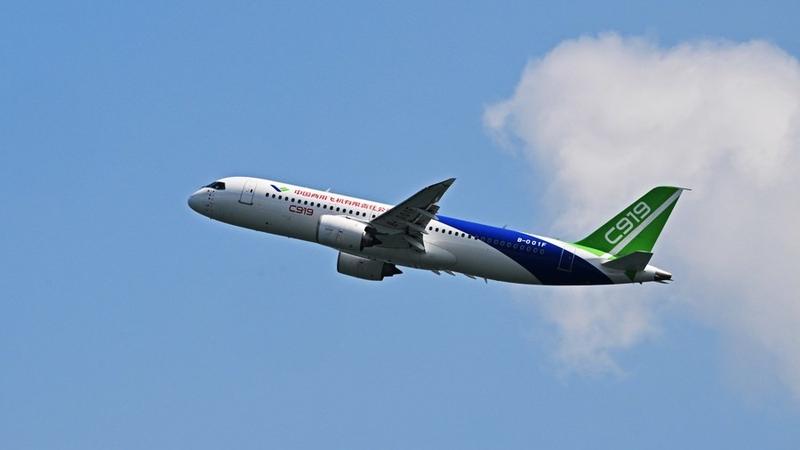Domestically made C919 aircraft seeking larger market share
 A Chinese passenger jet C919 makes a rehearsal flight to prepare for the upcoming Singapore Airshow in Singapore, Feb 18, 2024. (PHOTO / XINHUA)
A Chinese passenger jet C919 makes a rehearsal flight to prepare for the upcoming Singapore Airshow in Singapore, Feb 18, 2024. (PHOTO / XINHUA)
It is necessary to enhance operational efficiency and raise the core competitiveness of the C919, China's domestically produced commercial aircraft, with closer cooperation from participants along the industry chain and stronger support for research and development, according to a proposal from a national political adviser during the ongoing two sessions.
As the C919's commercial operations are still in their infancy, more efforts should be made to raise the plane's operational efficiency and market competitiveness, and additional policy support is necessary to promote large-scale commercial use of the aircraft, said Li Yangmin, general manager of China Eastern Air Holding Co Ltd.
READ MORE: COMAC planes arrive for static display, show flight in Laos
To achieve such objectives, relevant parties along the supply chain should work together in areas including parts and components maintenance support, operational support, commercial operational resource allocation and relevant supportive policies, added Li, who is also a member of the 14th National Committee of the Chinese People's Political Consultative Conference.
"As China's first self-developed narrow-body aircraft, the jet still needs improvements in its industry and supply chain stability," said Qi Qi, an associate professor at Guangzhou Civil Aviation College.
Like every new aircraft model, the C919 needs to be more stable and reliable to win the confidence of commercial aviation operators, so as to broaden its market share, Qi said.
Li said that as the first global customer of the homegrown passenger aircraft C919, China Eastern had established early close coordination with its manufacturer — Commercial Aircraft Corp of China (COMAC) — in areas related to R&D.
"Such coordination has paved the way for the prototype's commercial operation," Li said in his proposal.
The nation's first C919 was put into commercial operation on May 28, 2023 with a successful maiden flight between Shanghai Hongqiao International Airport and Beijing Capital International Airport. Currently, four C919 aircraft are in daily use.
Comparable to the Airbus A320 and the Boeing B737, C919 jets have logged 1,956 hours of commercial flying time and safely carried 81,668 passengers as of Dec 31, public information showed.
Lin Zhijie, an aviation industry analyst who is also a columnist at civil aviation website carnoc.com, said: "The first batch of C919 aircraft is tasked to explore the way for large-scale operations, develop capabilities, recognize and solve problems, and make product improvements. As a brand new jet model, the C919's large-scale operations cannot be accomplished by one airline or a few airlines, but require participation of the complete industry chain."
ALSO READ: China's COMAC airplanes begin demonstration flights in SE Asia
There will be comprehensive system engineering that requires joint efforts of the entire chain, including pilot training, operation control, airport facilities and support, maintenance, repair, aviation materials supply and production capacity.
On Sept 28, China Eastern inked a deal with COMAC to purchase an additional 100 C919 aircraft to pursue large-scale operation of the homegrown jets.
According to the delivery schedule, China Eastern's C919 fleet will reach 10 by the end of 2024, while other Chinese airliners are also expected to receive their C919 orders this year.
With the consistent delivery of China's first self-developed narrow-body aircraft to its customers, the aircraft model is making a shift from initial operations to operations in scale, said Li.
To support the expansion of the jetliner's delivery scale, more parties are urged to take part in and share their experiences with each other to achieve higher efficiency commercial operations, lower costs and constantly optimize performance, Li added.


